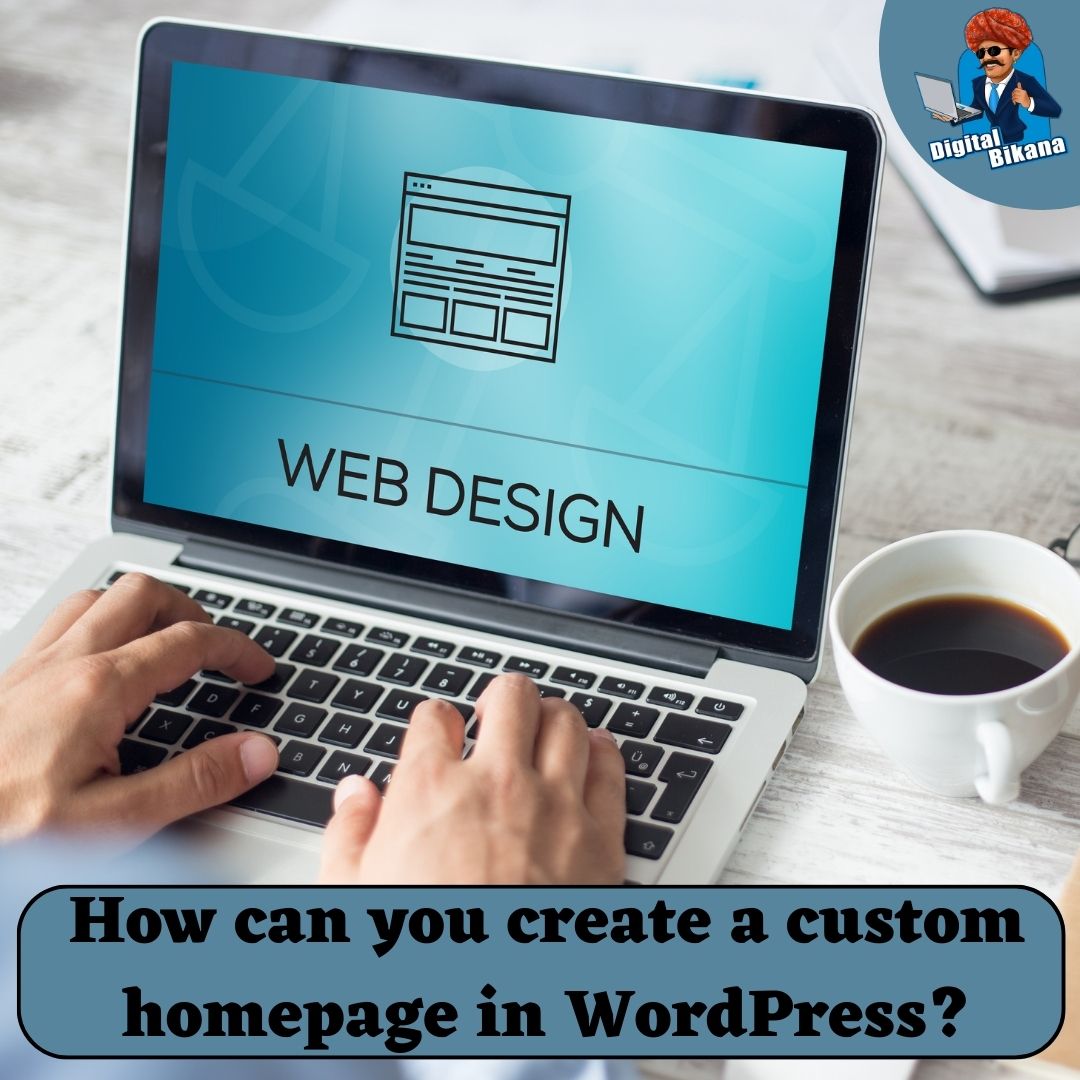How can you create a custom homepage in WordPress?
In this article e are going to talk about How can you create a custom Homepage in WordPress? In WordPress, the homepage serves as the front door to your website, making a powerful first impression on visitors. While WordPress offers default homepage templates, creating a custom homepage allows you to showcase your unique branding, highlight key content, and improve user engagement.
How can you create a custom homepage in WordPress?
In this article, we will guide you through the process of creating a custom homepage in WordPress. From selecting a suitable page template to adding custom content blocks and optimizing the layout, we will cover everything you need to know to create a captivating and functional homepage for your WordPress website.
I. Planning Your Custom Homepage
Before diving into the technical aspects, it is essential to plan your custom homepage. Consider your website’s goals, target audience, and desired user experience. Determine the key elements you want to feature, such as a hero image or video, featured products, testimonials, or a newsletter signup form. Sketch out a rough layout and identify the content sections you wish to include. This planning phase will provide clarity and guide your customization process.
II. Selecting a Page Template
To create a custom homepage, you need to select a suitable page template. WordPress offers several options, including pre-designed templates from your theme or specialized page builder plugins like Elementor, Divi, or Beaver Builder. Choose a template that aligns with your vision for the homepage and offers the flexibility to customize its elements. Page builders provide drag-and-drop interfaces, allowing you to easily modify and arrange content sections.
III. Customizing the Homepage Layout:
1. Content Blocks and Widgets
Start customizing your homepage by adding content blocks or widgets. Content blocks are pre-designed sections that can be easily inserted and customized within the page builder. Widgets, on the other hand, are smaller functional elements that can be added to specific areas of the homepage, such as a sidebar or footer. Use these tools to add and arrange elements like text, images, videos, testimonials, call-to-action buttons, and more.
Read Also: What are widgets and how can you use them in WordPress website designing?
2. Customizing Colors and Typography
Enhance the visual appeal of your custom homepage by customizing colors and typography. Most page builders provide options to modify font styles, sizes, and colors. Choose a consistent color scheme that aligns with your brand identity and ensure typography is legible and visually appealing across different devices.

3. Navigation and Menus
Consider how you want your navigation and menus to appear on the homepage. Depending on your theme and page builder, you can customize the header menu or create a custom menu that complements your homepage layout. Ensure that your navigation is intuitive, easy to navigate, and reflects the overall structure of your website.
Read Also: How can you create and manage a menu in WordPress?
4. Adding Dynamic Content
To make your custom homepage more engaging, consider incorporating dynamic content. Utilize plugins or custom code snippets to display recent blog posts, featured products, testimonials, or social media feeds. This dynamic content ensures that your homepage feels fresh and encourages visitors to explore further.
IV. Testing and Optimizing
Once you have customized your custom homepage, it is crucial to test it thoroughly. Preview your homepage on different devices and browsers to ensure it displays correctly and maintains responsiveness. Test all interactive elements, such as forms or buttons, to ensure they function as intended. Pay attention to page load times and optimize images and other assets to enhance performance.
Additionally, gather feedback from trusted sources or conduct user testing to gain insights into the user experience. Make necessary adjustments based on feedback to improve the overall usability and effectiveness of your custom homepage.

Conclusion
Creating a custom homepage in WordPress allows you to tailor your website’s first impression to your brand and audience. By carefully planning your homepage, selecting the right page template, customizing the layout, and optimizing the design and functionality, you can create a captivating and engaging experience for your visitors. Remember to regularly update and refine your custom homepage based on user feedback and evolving business needs. Embrace the power of customization in WordPress and unlock the potential to create a unique and compelling entrance to your website. So, Now I hope you have understood about creating a custom homepage in WordPress?
You can also checkout this website designing institute to learn digital marketing course by enrolling in our course Or Contact Digital Bikana on +91-8949483728

